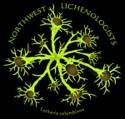Articus (2004) recognized several genera within Usnea, Dolichousnea being one of them. This has had a mixed reception, with some people adopting the segregate genera (Neuropogon, Eumitria, Dolichousnea), others not. She showed that Usnea is monophyletic, so it is really just a matter of taste whether one accepts Usnea in the broad sense vs. splitting it. I'm not sure why, but the current N Am checklist recognizes Dolichousnea but not Neuropogon. Ironically, wanting to recognized Neuropogon at the genus level was the reason Articus gives for segregating Eumitria and Dolichousnea (thus keeping the remnants of Usnea monophyletic). Personally, I am happy with Usnea in the broad sense as one of the most easily identified lichen genera in the world.

